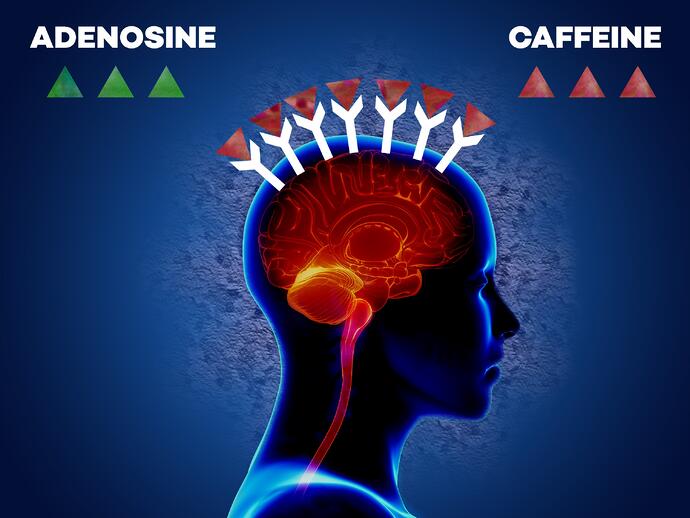
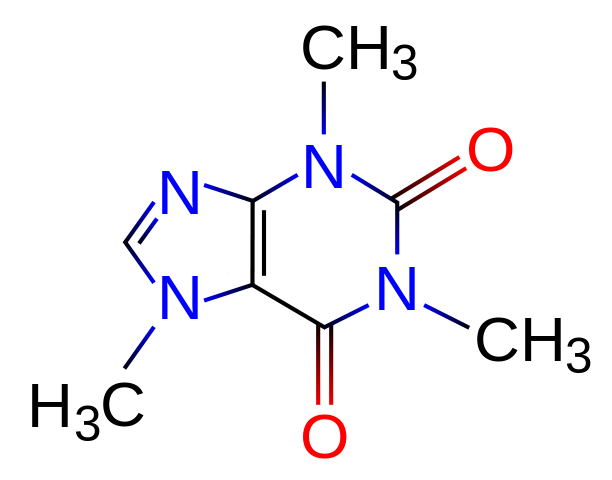


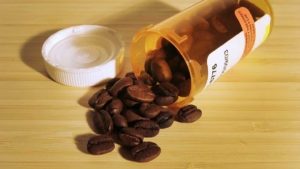
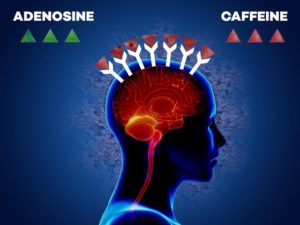
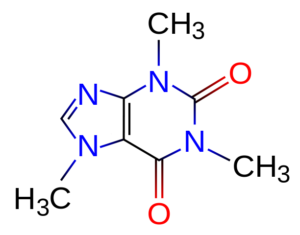

Coffee contains a number of useful nutrients, including: Riboflavin (vitamin B2),
Niacin (vitamin B3),
Magnesium,
Potassium,
Various phenolic compounds,
Antioxidants.
HEALTH BENEFITS OF COFFEE:
Coffee boosts your physical performance. …
Coffee may help you lose weight. …
Coffee helps you burn fat. …
Coffee helps you focus and stay alert. …
Coffee lowers risk of death. …
Coffee reduces risk of cancers. …
Coffee reduces risk of stroke. …
Coffee reduces risk of Parkinson’s disease.
Coffee may help you lose weight.
Coffee contains magnesium and potassium, which helps the human body use insulin, regulating blood sugar levels and reducing your craving for sugary treats and snacks.
Moderate caffeine intake, 1-6 cups a day, helps you focus and improves your mental alertness.
 Coffee lowers risk of death.
Studies have shown that coffee drinker’s overall risk of premature death is 25% lower than of those who don’t drink coffee.
Coffee reduces risk of cancers.
One study has shown that coffee may decrease the risk of developing prostate cancer in men by 20 %, and endometrial cancer in women by 25 %. People in the test group drank four cups of coffee a day. Caffeine may also prevent developing of basal cell carcinoma, the most common type of skin cancer
Coffee reduces risk of stroke.
Reasonable consumption of coffee (2–4 cups a day) is associated with lower risk of stroke.
Coffee reduces risk of Parkinson’s disease.
Studies have shown that regular coffee drinking decreases risk of Parkinson’s disease by 25 %. There’s evidence that coffee causes activity in the part of the brain affected by Parkinson’s.
Coffee lowers risk of death.
Studies have shown that coffee drinker’s overall risk of premature death is 25% lower than of those who don’t drink coffee.
Coffee reduces risk of cancers.
One study has shown that coffee may decrease the risk of developing prostate cancer in men by 20 %, and endometrial cancer in women by 25 %. People in the test group drank four cups of coffee a day. Caffeine may also prevent developing of basal cell carcinoma, the most common type of skin cancer
Coffee reduces risk of stroke.
Reasonable consumption of coffee (2–4 cups a day) is associated with lower risk of stroke.
Coffee reduces risk of Parkinson’s disease.
Studies have shown that regular coffee drinking decreases risk of Parkinson’s disease by 25 %. There’s evidence that coffee causes activity in the part of the brain affected by Parkinson’s.
 Coffee lowers risk of death.
Studies have shown that coffee drinker’s overall risk of premature death is 25% lower than of those who don’t drink coffee.
Coffee reduces risk of cancers.
One study has shown that coffee may decrease the risk of developing prostate cancer in men by 20 %, and endometrial cancer in women by 25 %. People in the test group drank four cups of coffee a day. Caffeine may also prevent developing of basal cell carcinoma, the most common type of skin cancer
Coffee reduces risk of stroke.
Reasonable consumption of coffee (2–4 cups a day) is associated with lower risk of stroke.
Coffee reduces risk of Parkinson’s disease.
Studies have shown that regular coffee drinking decreases risk of Parkinson’s disease by 25 %. There’s evidence that coffee causes activity in the part of the brain affected by Parkinson’s.
Coffee lowers risk of death.
Studies have shown that coffee drinker’s overall risk of premature death is 25% lower than of those who don’t drink coffee.
Coffee reduces risk of cancers.
One study has shown that coffee may decrease the risk of developing prostate cancer in men by 20 %, and endometrial cancer in women by 25 %. People in the test group drank four cups of coffee a day. Caffeine may also prevent developing of basal cell carcinoma, the most common type of skin cancer
Coffee reduces risk of stroke.
Reasonable consumption of coffee (2–4 cups a day) is associated with lower risk of stroke.
Coffee reduces risk of Parkinson’s disease.
Studies have shown that regular coffee drinking decreases risk of Parkinson’s disease by 25 %. There’s evidence that coffee causes activity in the part of the brain affected by Parkinson’s.
Coffee protects your body.Coffee contains a lot of antioxidants, that work as little warriors fighting and protecting against free radicals within your body.
Coffee may lower risk of Type II diabetes.
Caffeine decreases your insulin sensitivity and impairs glucose tolerance, therefore reduces your risk of type 2 diabetes.
 Coffee protects your brain.
High caffeine levels in your blood reduce the risk of Alzheimer disease. It also lowers risk of dementia.
Coffee brightens your mood, helps fight depression and lowers risk of suicide.
Caffeine stimulates the central nervous system and boosts production of neurotransmitters like serotonin, dopamine, and noradrenaline, which elevate your mood. Two cups of coffee a day prevents risk of suicide by 50 %.
Coffee protects your brain.
High caffeine levels in your blood reduce the risk of Alzheimer disease. It also lowers risk of dementia.
Coffee brightens your mood, helps fight depression and lowers risk of suicide.
Caffeine stimulates the central nervous system and boosts production of neurotransmitters like serotonin, dopamine, and noradrenaline, which elevate your mood. Two cups of coffee a day prevents risk of suicide by 50 %.
Two Types of Coffee beans: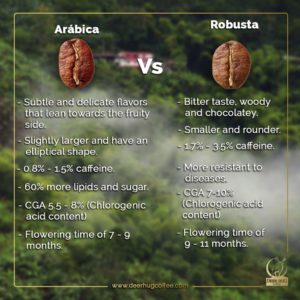
 Arabica is smoother and sweeter while Robusta is infamous for its bitter and traditional “coffee” flavor.
There are two main types of coffee species, Arabica and Robusta. Arabica originates from Ethiopia and produces a mild, flavorful tasting coffee. It is the most popular type worldwide. However, it is expensive to grow because the Arabica plant is sensitive to the environment, requiring shade, humidity, and steady temperatures between 60-75 degrees Fahrenheit. The Robusta coffee plant is more economical to grow because it is resistant to disease and survives in a wider range of temperatures between 65-97 degrees Fahrenheit. It can also withstand harsh climate changes such as variations in rainfall and strong sunlight.
Type of roast:
Coffee beans start out green. They are roasted at a high heat to produce a chemical change that releases the rich aroma and flavor that we associate with coffee. They are then cooled and ground for brewing. Roasting levels range from light to medium to dark. The lighter the roast, the lighter the color and roasted flavor and the higher its acidity. Dark roasts produce a black bean with little acidity and a bitter roasted flavor. The popular French roast is medium-dark.
Arabica is smoother and sweeter while Robusta is infamous for its bitter and traditional “coffee” flavor.
There are two main types of coffee species, Arabica and Robusta. Arabica originates from Ethiopia and produces a mild, flavorful tasting coffee. It is the most popular type worldwide. However, it is expensive to grow because the Arabica plant is sensitive to the environment, requiring shade, humidity, and steady temperatures between 60-75 degrees Fahrenheit. The Robusta coffee plant is more economical to grow because it is resistant to disease and survives in a wider range of temperatures between 65-97 degrees Fahrenheit. It can also withstand harsh climate changes such as variations in rainfall and strong sunlight.
Type of roast:
Coffee beans start out green. They are roasted at a high heat to produce a chemical change that releases the rich aroma and flavor that we associate with coffee. They are then cooled and ground for brewing. Roasting levels range from light to medium to dark. The lighter the roast, the lighter the color and roasted flavor and the higher its acidity. Dark roasts produce a black bean with little acidity and a bitter roasted flavor. The popular French roast is medium-dark.

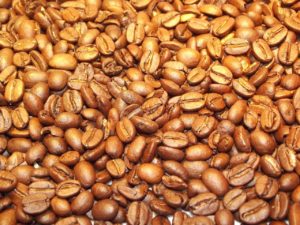

 Type of grind.
Type of grind.
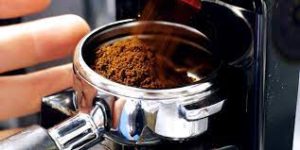 A medium grind is the most common and used for automatic drip coffee makers. A fine grind is used for deeper flavors like espresso, which releases the oils, and a coarse grind is used in coffee presses.
Decaffeinated coffee. This is an option for those who experience unpleasant side effects from caffeine. The two most common methods used to remove caffeine from coffee is to apply chemical solvents (methylene chloride or ethyl acetate) or carbon dioxide gas. Both are applied to steamed or soaked beans, which are then allowed to dry. The solvents bind to caffeine and both evaporate when the beans are rinsed and/or dried. According to U.S. regulations, at least 97% of the caffeine must be removed to carry the decaffeinated label, so there may be trace residual amounts of caffeine. Both methods may cause some loss of flavor as other naturally occurring chemicals in coffee beans that impart their unique flavor and scent may be destroyed during processing.
A medium grind is the most common and used for automatic drip coffee makers. A fine grind is used for deeper flavors like espresso, which releases the oils, and a coarse grind is used in coffee presses.
Decaffeinated coffee. This is an option for those who experience unpleasant side effects from caffeine. The two most common methods used to remove caffeine from coffee is to apply chemical solvents (methylene chloride or ethyl acetate) or carbon dioxide gas. Both are applied to steamed or soaked beans, which are then allowed to dry. The solvents bind to caffeine and both evaporate when the beans are rinsed and/or dried. According to U.S. regulations, at least 97% of the caffeine must be removed to carry the decaffeinated label, so there may be trace residual amounts of caffeine. Both methods may cause some loss of flavor as other naturally occurring chemicals in coffee beans that impart their unique flavor and scent may be destroyed during processing.
 Coffee protects your brain.
High caffeine levels in your blood reduce the risk of Alzheimer disease. It also lowers risk of dementia.
Coffee brightens your mood, helps fight depression and lowers risk of suicide.
Caffeine stimulates the central nervous system and boosts production of neurotransmitters like serotonin, dopamine, and noradrenaline, which elevate your mood. Two cups of coffee a day prevents risk of suicide by 50 %.
Coffee protects your brain.
High caffeine levels in your blood reduce the risk of Alzheimer disease. It also lowers risk of dementia.
Coffee brightens your mood, helps fight depression and lowers risk of suicide.
Caffeine stimulates the central nervous system and boosts production of neurotransmitters like serotonin, dopamine, and noradrenaline, which elevate your mood. Two cups of coffee a day prevents risk of suicide by 50 %.

 Arabica is smoother and sweeter while Robusta is infamous for its bitter and traditional “coffee” flavor.
There are two main types of coffee species, Arabica and Robusta. Arabica originates from Ethiopia and produces a mild, flavorful tasting coffee. It is the most popular type worldwide. However, it is expensive to grow because the Arabica plant is sensitive to the environment, requiring shade, humidity, and steady temperatures between 60-75 degrees Fahrenheit. The Robusta coffee plant is more economical to grow because it is resistant to disease and survives in a wider range of temperatures between 65-97 degrees Fahrenheit. It can also withstand harsh climate changes such as variations in rainfall and strong sunlight.
Type of roast:
Coffee beans start out green. They are roasted at a high heat to produce a chemical change that releases the rich aroma and flavor that we associate with coffee. They are then cooled and ground for brewing. Roasting levels range from light to medium to dark. The lighter the roast, the lighter the color and roasted flavor and the higher its acidity. Dark roasts produce a black bean with little acidity and a bitter roasted flavor. The popular French roast is medium-dark.
Arabica is smoother and sweeter while Robusta is infamous for its bitter and traditional “coffee” flavor.
There are two main types of coffee species, Arabica and Robusta. Arabica originates from Ethiopia and produces a mild, flavorful tasting coffee. It is the most popular type worldwide. However, it is expensive to grow because the Arabica plant is sensitive to the environment, requiring shade, humidity, and steady temperatures between 60-75 degrees Fahrenheit. The Robusta coffee plant is more economical to grow because it is resistant to disease and survives in a wider range of temperatures between 65-97 degrees Fahrenheit. It can also withstand harsh climate changes such as variations in rainfall and strong sunlight.
Type of roast:
Coffee beans start out green. They are roasted at a high heat to produce a chemical change that releases the rich aroma and flavor that we associate with coffee. They are then cooled and ground for brewing. Roasting levels range from light to medium to dark. The lighter the roast, the lighter the color and roasted flavor and the higher its acidity. Dark roasts produce a black bean with little acidity and a bitter roasted flavor. The popular French roast is medium-dark.



 Type of grind.
Type of grind.
 A medium grind is the most common and used for automatic drip coffee makers. A fine grind is used for deeper flavors like espresso, which releases the oils, and a coarse grind is used in coffee presses.
Decaffeinated coffee. This is an option for those who experience unpleasant side effects from caffeine. The two most common methods used to remove caffeine from coffee is to apply chemical solvents (methylene chloride or ethyl acetate) or carbon dioxide gas. Both are applied to steamed or soaked beans, which are then allowed to dry. The solvents bind to caffeine and both evaporate when the beans are rinsed and/or dried. According to U.S. regulations, at least 97% of the caffeine must be removed to carry the decaffeinated label, so there may be trace residual amounts of caffeine. Both methods may cause some loss of flavor as other naturally occurring chemicals in coffee beans that impart their unique flavor and scent may be destroyed during processing.
A medium grind is the most common and used for automatic drip coffee makers. A fine grind is used for deeper flavors like espresso, which releases the oils, and a coarse grind is used in coffee presses.
Decaffeinated coffee. This is an option for those who experience unpleasant side effects from caffeine. The two most common methods used to remove caffeine from coffee is to apply chemical solvents (methylene chloride or ethyl acetate) or carbon dioxide gas. Both are applied to steamed or soaked beans, which are then allowed to dry. The solvents bind to caffeine and both evaporate when the beans are rinsed and/or dried. According to U.S. regulations, at least 97% of the caffeine must be removed to carry the decaffeinated label, so there may be trace residual amounts of caffeine. Both methods may cause some loss of flavor as other naturally occurring chemicals in coffee beans that impart their unique flavor and scent may be destroyed during processing.

I do not even know how I ended up here but I thought this post was great I do not know who you are but certainly youre going to a famous blogger if you are not already Cheers
I was reading some of your blog posts on this site and I conceive this site is real informative! Keep on putting up.
It would be interesting to know more
Thank you very much for your help.
I think this is a good idea. I agree with you.
I want to show you one exclusive program called (BTC PROFIT SEARCH AND MINING PHRASES), which can make you a rich man!
This program searches for Bitcoin wallets with a balance, and tries to find a secret phrase for them to get full access to the lost wallet!
Run the program and wait, and in order to increase your chances, install the program on all computers available to you, at work, with your friends, with your relatives, you can also ask your classmates to use the program, so your chances will increase tenfold!
Remember the more computers you use, the higher your chances of getting the treasure!
DOWNLOAD FOR FREE
Telegram:
https://t.me/btc_profit_search
Everything is very open and very clear explanation of issues. was truly information. Your website is very useful. Thanks for sharing.
Im not sure where you are getting your info, but good topic. I must spend some time learning much more or understanding more. Thank you for fantastic info I was in search of this information for my mission.
My spouse and i have been so fortunate Michael managed to deal with his investigations because of the ideas he had from your very own blog. It is now and again perplexing just to be making a gift of guidelines a number of people could have been trying to sell. And now we remember we need you to be grateful to for that. These illustrations you made, the straightforward web site menu, the friendships you aid to promote – it’s many astonishing, and it is letting our son in addition to the family imagine that that topic is thrilling, which is certainly exceedingly essential. Thank you for the whole lot!
I like this post, enjoyed this one thank you for posting. “Abortion is advocated only by persons who have themselves been born.” by Ronald Reagan.
I think this internet site has very fantastic pent written content blog posts.
I really like your blog.. very nice colors & theme. Did you make this website yourself or did you hire someone to do it for you? Plz respond as I’m looking to design my own blog and would like to find out where u got this from. cheers
I’ve been surfing online more than three hours today, yet I never found any interesting article like yours. It’s pretty worth enough for me. Personally, if all webmasters and bloggers made good content as you did, the net will be a lot more useful than ever before.
You made some good points there. I looked on the internet for the issue and found most guys will go along with with your website.
You are making a mistake. Email me at PM, we will talk.
I discovered your blog site on google and check a few of your early posts. Continue to keep up the very good operate. I just additional up your RSS feed to my MSN News Reader. Seeking forward to reading more from you later on!…
I’m really enjoying the theme/design of your blog. Do you ever run into any browser compatibility issues? A small number of my blog audience have complained about my website not working correctly in Explorer but looks great in Firefox. Do you have any advice to help fix this problem?
Hello There. I found your blog using msn. This is an extremely well written article. I will make sure to bookmark it and come back to read more of your useful information. Thanks for the post. I’ll definitely return.
wqajmshzn lxdid vgpuotf vjti pbbqbnixbchgucv
814416 994400Most appropriate the human race messages work to show your and present exclusive chance with unique couple. Beginer appear system in advance of raucous individuals will most likely always be aware most of the golden value off presentation, which is a persons truck. very best man jokes 266609
413185 766940Sweet internet site, super style and design , actually clean and use friendly . 718189
973495 766029hello excellent web site i will definaely come back and see once more. 560677
192555 127169I recognize there is surely a great deal of spam on this blog. Do you want help cleansing them up? I might assist in between classes! 655012
797743 276869Your blog is showing a lot more interest and enthusiasm. Thank you so a lot. 81676
Fine data. Kudos.
aladdins gold online casino review https://casinonair.com/super-bowl-betting/ www online casino games free
fantastic post.Never knew this, thanks for letting me know.
Effectively voiced certainly! .
olympic casino online https://shadowcasino.info/online-casino-canada/ saucify online casinos
862529 285203Excellent humans speeches and toasts, possibly toasts. are hands down transferred at some time by means of party and expected to turn into quite funny, amusing not to mention educational in the mean time. best man wedding speeches 85108
Nicely put. Cheers!
zahranicni online casina https://casinoshaman.com/casino-online-real-money-no-deposit/ free online casino games with free coins
Valuable knowledge. Appreciate it!
golden lion casino online https://eseomail.com/ pearl river casino online
Terrific content, Thank you!
online casino with daily login bonus https://findscasino.info/golf-betting/ las vegas casino online slots
Amazing loads of awesome tips!
400 bonus online casinos https://uscasinoguides.com/nascar-betting/ 123 online casino bonuses
Gaming evolution! Subway Surfers redefines endless runner entertainment with its vibrant graphics.
Thanks! A lot of facts!
migliori casino online con bonus senza deposito https://linkscasino.info/crypto-casinos/ fantastic casino online
Many thanks, Terrific information.
online casino s licencГ https://casinoslotssaid.com/nhl-live-betting/ online casino texas holdem poker
Thanks a lot! Numerous data!
mines online game casino https://riggambling.com/super-bowl-betting/ hollywood online casino reviews
Fine posts. Regards!
jackpot city online casino australia https://snipercasino.info/no-deposit-bonus-casino/ alantic city gden nugget casino online
Incredible a good deal of valuable advice!
vegas casino online no deposit bonus codes 2023 https://casinoshaman.com/live-casino-roulette/ agen casino roulette online
Thanks, I appreciate this!
online casino vklad pres sms https://casinonair.com/new-jersey-online-casinos/ casino online argentina transferencia bancaria
This is nicely expressed! .
wolf treasure online casino australia https://eseomail.com/best-tennessee-online-casino-site/ online casino for pa residents
You actually explained this superbly.
dunder online casino reviews https://usagamblingexperts.com/review-ignition/ hard rock cafe casino online
Many thanks! Plenty of posts!
caesars pennsylvania online casino https://uscasinoguides.com/golf-betting/ betvisa casino online
You suggested that fantastically.
australian online casino free spins sign up https://casinoslotssaid.com/betwhale-welcome-bonus/ harrahs ac online casino
Thanks a lot, Fantastic information.
american playing online european casino https://findscasino.info/online-poker-sites/ parx online casino nj
Factor very well considered!.
new-online-casinos.com https://linkscasino.info/states/ gta 5 online casino heist payouts
Regards, An abundance of information!
gta v online casino chip limit https://shadowcasino.info/online-video-poker/ online casino mauritius
Nicely put. Thanks.
film casino smotret online https://usagamblingexperts.com/crypto-casino/ best online casino for bangladesh
Truly a lot of superb advice!
casino online royal https://igamingcasino.info/new-york-online-casinos/ casino online slovenia
Nicely spoken of course! !
free online casino that pays real money https://uscasinoguides.com/horse-betting/ kostenlos online casino
438691 858973Hey there! Very good stuff, do maintain us posted when you lastly post something like that! 282667
You actually expressed that wonderfully.
barbet casino online https://combatcasino.info/betting/ sweeps coins casino online
You said this effectively!
online casinos in america https://ratingcasino.info/ufc-mma-betting/ best of online casino
You stated it exceptionally well.
billionaire casino online https://onlinecasinoindex.us/casinos-ethereum/ what states allow online casino
Incredible plenty of fantastic knowledge!
best casino salout in estonia online https://mgmonlinecasino.us/real-money-online-poker/ online casino forum
Really lots of helpful material.
casino online real cash https://mgmonlinecasino.us/online-betting-on-horse-racing/ supernova online casino
With thanks. I appreciate it!
live casino pa online https://casinocashstars.com/arizona-online-casinos/ free online flash casino slot games
Many thanks, An abundance of stuff.
online casino courses https://casinosonlinenew.com/nfl-sports-betting/ sabotage casino gta online
You actually expressed this fantastically.
top 10 online casino malaysia https://mgmonlinecasino.us/xbet-reviews/ online casino Гјberweisung
Wow all kinds of valuable data.
betrivers online casino review https://magicalcasino.info/nascar-betting/ top online casino in nj
Cheers! Awesome stuff.
caesars online casino nj phone number https://usagamblingexperts.com/nba-basketball-betting/ online casino bonus money
Whoa many of excellent facts.
online casino norge https://casinosonlinenew.com/banking/ online casino spiele kostenlos
Regards, A lot of tips!
casino online betking https://buckscasino.info/crash-gambling/ casino epoca online
You actually expressed it well!
best texas online casinos https://casinoslotssaid.com/play-keno-for-real-money-online/ casino win real money online
Truly quite a lot of wonderful knowledge!
online casinos with $20 minimum deposit https://uscasinoguides.com/xbet-review/ todos los casinos online
Kudos! Terrific stuff!
tusk casino online https://mgmonlinecasino.us/casino-games-online-real-money/ online casino free sign up bonus gcash
Our complex processes became manageable with AI Tools. These AI Tools provide automation that’s sophisticated yet surprisingly easy to implement.
Enjoyed reading through this, very good stuff, appreciate it. “I will do my best. That is all I can do. I ask for your help-and God’s.” by Lyndon B. Johnson.
Very interesting topic, thank you for putting up.
of course like your web site but you need to check the spelling on several of your posts. Several of them are rife with spelling problems and I find it very bothersome to tell the reality however I will surely come back again.
Very interesting details you have mentioned, appreciate it for posting. “There is nothing in a caterpillar that tells you it’s going to be a butterfly.” by Richard Buckminster Fuller.
Throughout the awesome scheme of things you’ll receive a B+ for effort. Exactly where you actually lost us was first on your specifics. As as the maxim goes, details make or break the argument.. And that could not be more correct right here. Having said that, let me reveal to you precisely what did do the job. Your article (parts of it) is actually pretty persuasive and this is possibly why I am taking an effort in order to comment. I do not really make it a regular habit of doing that. 2nd, despite the fact that I can certainly see the jumps in reason you make, I am not necessarily certain of how you appear to connect the ideas which inturn produce the conclusion. For right now I will, no doubt subscribe to your issue but hope in the future you actually link the dots much better.
What i don’t realize is in truth how you’re no longer really much more well-favored than you may be right now. You are so intelligent. You realize thus considerably with regards to this matter, produced me in my view consider it from numerous varied angles. Its like women and men aren’t involved until it?¦s something to do with Girl gaga! Your individual stuffs great. All the time take care of it up!
https://www.noo.by/wiki/Backstreet_Boys:_Короли_бой-бэндов
I am continuously looking online for posts that can aid me. Thx!
Wow! Thank you! I constantly needed to write on my blog something like that. Can I implement a part of your post to my blog?
https://mazda-demio.ru/forums/index.php?autocom=gallery&req=si&img=6424
https://myteana.ru/forums/index.php?autocom=gallery&req=si&img=6708
Very good https://is.gd/tpjNyL
Very good https://is.gd/tpjNyL
Very good https://is.gd/tpjNyL
Very good https://is.gd/tpjNyL
Awesome https://shorturl.at/2breu
Good https://shorturl.at/2breu
Good https://shorturl.at/2breu
Very good https://shorturl.at/2breu
Awesome https://shorturl.at/2breu
Very good https://lc.cx/xjXBQT
Good https://lc.cx/xjXBQT
https://mazda-demio.ru/forums/index.php?autocom=gallery&req=si&img=6400
https://honda-fit.ru/forums/index.php?autocom=gallery&req=si&img=7101
Very good https://lc.cx/xjXBQT
Good https://short-url.org/10VGf
Awesome https://t.ly/tndaA
Very good https://t.ly/tndaA
Awesome https://rb.gy/4gq2o4
Very good https://is.gd/N1ikS2
https://hrv-club.ru/forums/index.php?autocom=gallery&req=si&img=7083
http://terios2.ru/forums/index.php?autocom=gallery&req=si&img=4756
Awesome https://is.gd/N1ikS2
Good https://is.gd/N1ikS2
Awesome https://is.gd/N1ikS2
Good https://is.gd/N1ikS2
покупка аккаунтов купить аккаунт
Awesome https://is.gd/N1ikS2
Hi!
Our platform features a user-friendly interface that makes it easy for anyone, regardless of prior experience, to navigate the world of binary options trading. Our advanced technology provides real-time market analysis and updates to help you make informed decisions, while our 24/7 support team is always available to assist you.
Earn every minute without limit of $100, $500, $1,000, with a minimum bet of $1.
Instant withdrawal!!!
Bonus code: OLYMPOLYMP
From $50 +30% to deposit!
+ Demo account!
+ Free Signals!
WARNING! If you are trying to access the site from the following countries, you need to enable VPN which does not apply to the following countries!
Australia, Canada, USA, Japan, UK, EU (all countries), Israel, Russia, Iran, Iraq, Korea, Central African Republic, Congo, Cote d’Ivoire, Eritrea, Ethiopia, Lebanon, Liberia, Libya, Mali, Mauritius, Myanmar, New Zealand, Saint Vincent and the Grenadines, Somalia, Sudan, Syria, Vanuatu, Yemen, Zimbabwe.
Sign up and start earning from the first minute!
https://trkmad.com/101773
площадка для продажи аккаунтов продать аккаунт
магазин аккаунтов социальных сетей продажа аккаунтов соцсетей
Very good https://is.gd/N1ikS2
Very good https://is.gd/N1ikS2
продать аккаунт маркетплейс для реселлеров
Awesome https://is.gd/N1ikS2
Very good https://is.gd/N1ikS2
Good https://is.gd/N1ikS2
Good https://is.gd/N1ikS2
Awesome https://is.gd/N1ikS2
fka59s
Very good https://is.gd/N1ikS2
Very good https://is.gd/N1ikS2
безопасная сделка аккаунтов гарантия при продаже аккаунтов
Very good https://is.gd/N1ikS2
Good https://is.gd/N1ikS2
маркетплейс аккаунтов соцсетей магазин аккаунтов
Very good https://is.gd/N1ikS2
магазин аккаунтов магазин аккаунтов
купить аккаунт безопасная сделка аккаунтов
Very good https://is.gd/N1ikS2
Good https://is.gd/N1ikS2
Awesome https://is.gd/N1ikS2
Very good https://is.gd/N1ikS2
Good https://is.gd/N1ikS2
перепродажа аккаунтов перепродажа аккаунтов
заработок на аккаунтах безопасная сделка аккаунтов
продать аккаунт продажа аккаунтов
https://mazda-demio.ru/forums/index.php?autocom=gallery&req=si&img=6377
https://mazda-demio.ru/forums/index.php?autocom=gallery&req=si&img=6380
гарантия при продаже аккаунтов https://ploshadka-prodazha-akkauntov.ru/
заработок на аккаунтах купить аккаунт с прокачкой
продажа аккаунтов соцсетей заработок на аккаунтах
Account market Secure Account Sales
Accounts for Sale Buy and Sell Accounts
https://honda-fit.ru/forums/index.php?autocom=gallery&req=si&img=7095
https://hrv-club.ru/forums/index.php?autocom=gallery&req=si&img=6931
https://mazda-demio.ru/forums/index.php?autocom=gallery&req=si&img=6369
http://terios2.ru/forums/index.php?autocom=gallery&req=si&img=4586
https://mazda-demio.ru/forums/index.php?autocom=gallery&req=si&img=6376
http://passo.su/forums/index.php?autocom=gallery&req=si&img=4314
https://vitz.ru/forums/index.php?autocom=gallery&req=si&img=5107
http://wish-club.ru/forums/index.php?autocom=gallery&req=si&img=5511
Dice games and AI tools both thrive on strategy-tyy.AI’s AI Tax Assistant is a great example of smart automation making complex tasks simple and efficient.
Hello very nice site!! Man .. Excellent .. Amazing .. I’ll bookmark your site and take the feeds additionallyKI am satisfied to seek out a lot of helpful information here within the submit, we’d like develop more strategies in this regard, thank you for sharing. . . . . .
магазин аккаунтов https://akkaunt-magazin.online
маркетплейс аккаунтов https://akkaunty-optom.live
покупка аккаунтов https://online-akkaunty-magazin.xyz/
площадка для продажи аккаунтов https://akkaunty-dlya-prodazhi.pro/
купить аккаунт https://kupit-akkaunt.online/
SeSaWo mPeNB PsXAQNv xKraSjvA bbkO seBbdY soh
buy facebook ads accounts buy facebook account
buy facebook ads accounts facebook ad accounts for sale
facebook ad account for sale https://buy-ad-account.top
facebook ad account buy https://buy-ads-account.click
It’s fascinating how slot trends evolve, especially with games like Super PH blending strategy and luck. The 1024 ways to win keep players hooked, and those free spins sure add excitement!